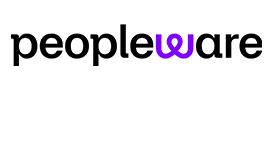Charles Watson introduces us to occupancy and how the metric is used in contact centre workforce management (WFM).
Occupancy is a key metric for contact centres that want neither to burn money nor to burn out their agents.
It’s also crucial for getting long-term hiring and staffing plans right and for improving efficiency and customer satisfaction.
What Is Occupancy in the Contact Centre?
Occupancy is an important metric in any contact centre. It represents how busy your contact centre agents are.
The standard formula is: (Total Handle Time) / (Total Time Available for Work).
In other words, it’s the percentage of time agents are logged in ready to work when they are actually working. It’s the inverse of “idle” or “available” time.
Shrinkage is not included in this calculation. If an agent is paid eight hours a day and is only available for phone calls for six hours (because they have two hours of shrinkage), then six hours is the denominator.
Which Occupancy for Which Channel?
For calls, occupancy has to be well under 100% in order to achieve service level. Generally, it will be 80-90%, depending on the efficiency of your centre and the service level set. In other channels, such as email or chat, occupancy can be set much higher.
In the case of chat, agents generally will engage in more than one chat at a time. So they can technically be occupied more than 100% of the time. We aren’t covering concurrency of chats in this blog, but the concurrency rate will impact occupancy.
For email, you may be consistently 90-100% occupied. This will be determined by the workload coming in. The staffing model should assume 100% occupancy because you want to assume they can be working on emails the entire time they are staffed.
Negative Effects of High and Low Occupancy
Low occupancy is generally a signal that the contact centre isn’t efficient. High occupancy runs the risk of driving high attrition.
When occupancy is low, it means you’re overpaying for labour. The employees aren’t being fully utilized and service levels are coming in too high. Labour costs make up the majority of the cost of most operations, so this can have a huge impact on the profitability of your operations.
On the other side, if occupancy is too high, then your employees may get ‘burnt out’. This will inevitably also drive down service levels. Service levels are highly dependent on agents being available for answering incoming calls. If occupancy is too high, then queues can build and agents don’t become available often enough to achieve service level.
On the employee side, high occupancy for phones can cause stress and exhaustion in agents. They’ll attrit at a higher rate. Additionally, you may see after-call work (ACW) go up as they create their own breaks by sitting in after-call work.
This becomes an even bigger challenge if that flawed data feeds into your staffing model. It will suggest you have longer handle times and need more staff. When you staff up to “right-size” the operation, you’ll actually be overstaffed because handle times will go back to normal as occupancy gets back to normal.
The Right Occupancy for Your Contact Centre
Occupancy is generally used in the long-term (monthly) capacity-planning process. It serves as an input to determine how many full-time equivalents (FTE) are needed to achieve a service level. Because of this, it affects the long-term staffing and hiring decisions.
If you look at historical data, you can build a relationship between service level and occupancy. For a given occupancy, you normally achieve a certain service level in your contact centre.
Vice versa, it is the same. If you achieve an 80% service level, you typically get a consistent occupancy level. You should check that correlation for your centre regularly to ensure your staffing models are accurate.
To conclude, in capacity planning, you’re using occupancy to make sure you hire the right number of people and align the available staff correctly throughout the year or the next months and weeks.
What About Occupancy Calculations for Individual Days?
In the planning process, occupancy isn’t generally used at an interval lower than a week, sometimes not even lower than a month. At that point, you would just be using your workforce management (WFM) system to determine the staffing requirements.
Some systems will provide an expected occupancy as an estimate. In my experience, the WFM tools tend not to mirror real life that well and I wouldn’t recommend presenting that as an occupancy expectation unless you’re finding it really does match.
The occupancy used in the long-term plan is what you hire and staff to. That’s the benchmark you should use if you’re setting expectations on occupancy for a week or a month.
Refining the Occupancy Target
If you want to determine the right occupancy for your contact centre, you need to establish a collaboration between operations, workforce management and finance.
Each plays an important role in determining the right balance. Let’s look a little at the role each group plays:
Finance
The finance group sets the shareholder objectives for the contact centre. Based on the profitability requirements of the business, there is a set amount of money the contact centre can spend. This essentially gives you a set amount of headcount you can have.
Generally, there will be some back and forth on how many FTE are needed and how many you can have in your plan as you manage from month to month.
But going into the year, there’s likely a target number you can actually afford. Using your WFM technology, you can estimate the service level you can reach with that headcount.
Operations
The operations leadership needs to determine the service level objective. A best practice here is to look at the correlation between customer satisfaction scores and service levels.
In other words, what’s the lowest service level you can manage to without having a negative impact on customer satisfaction? Or, you may find that at certain service levels, customer satisfaction goes up.
So, between operations’ input on what service level is needed to achieve customer satisfaction and the finance requirement to achieve a certain budget, the optimal service level can be determined.
Workforce Management
The WFM team has the ability to do sensitivity analysis on the various service level objectives, and can inform the business of the expected occupancy at a given service level. WFM can also help to quantify any other trade-offs.
For example, an 80% service level may get an 80% occupancy with the current set-up. But if two groups are combined, you may be able to get an 85% occupancy, because you have a better economy of scale.
Economy of scale is the effect that in settings with higher volumes and agent counts, the occupancy of each agent is higher.
The reverse is true as well. There may be a desire to split up groups to allow agents to better specialize. That will usually come at a reduced economy of scale, and therefore a lower occupancy when you hit service level. WFM can also quantify the FTE impact of these changes, which then can be easily translated to the cost to the business.
Intraday Management of Occupancy and Service Level
Once you’ve set your plan, managing occupancy is important to balance service levels with efficiency. Basic contact centres will just manage service levels to not go below a certain level.
For example, in a contact centre with an 80/20 service level goal, the focus may be ensuring that it doesn’t go below a certain point during the day.
When service levels are low, occupancy is typically higher than it should be. When this is the case, it should trigger service level recovery actions.
The best-run contact centres, however, also take action when the service level gets too high. High service levels mean your agents are not well utilized. Occupancy is generally low when service levels are high.
To institutionalize this, instead of setting service levels at a set level (e.g. the 80/20 example), set a range. The 80/20 can become 75-85/20, so targeting between 75% and 85% of the calls within a threshold of 20 seconds.
By doing this, you’re planning a balance between being there for your customers with ensuring you don’t overspend on labour.
To manage to a range, you can set your WFM system to calculate the agent requirements based on the midpoint (80%). As you engage in weekly planning and intraday management, staffing adjustments are made to try to keep as many intervals within this range as possible.
3 Tips for Managing Occupancy
Here are three additional tips for managing occupancy in the contact centre.
Tip 1: Regularly Do a “Health Check” on Your Operations
Small changes over time can have a large impact. Take scheduling efficiency as an example. A few exceptions to agent schedules for employee satisfaction reasons will make you a little less efficient. That happens a few more times and before you know it, you actually have a significant shift in efficiency.
As your schedules are not covering demand as efficiently as they did before, you can no longer achieve the same service level with the same level of occupancy. Occupancy will be higher.
Another factor is fluctuations in volume year over year. If your business (and queues) are growing, then you may actually be more efficient and you can plan on higher occupancy (due to the aforementioned economies of scale). If you don’t build that into your plan, though, you’ll continue to staff to the lower occupancy and just end up getting a slightly better service level (which you might not want).
Tip 2: Have Occupancy as a Level One Metric
Occupancy should be reported and discussed regularly. By keeping it in the forefront, you’ll see more quickly if there is any deterioration. As you observe this, you can do a quick root cause analysis on the issue and take action.
If you don’t look at it regularly, the number of factors that are impacting it over time will grow. If you wait too long, it can be difficult to unwind those to see which has the largest impact.
Tip 3: Look at Intraday Occupancy Levels
You should do that to ensure staff is utilized as evenly as possible across the day. Your WFM system may say you have staff perfectly aligned; however, that’s based on modelling.
In reality, you may have factors that are driving occupancy up or down.
For example, if there are a lot of people who get off at 5pm and several regularly log out early, you may have higher occupancy during those intervals as staffing drops off quicker than expected.
In this case, it’ll hit you in service level.
If occupancy is consistently low during certain times of day or days of week, that may trigger a fresh look at how you’re scheduling the staff.
Conclusion
Occupancy is a critical metric and one that a WFM professional needs to keep in the forefront. It’s generally not as well understood by the operations team.
Getting to understand how it correlates with service level (and potentially customer satisfaction and employee attrition) can make your WFM team a powerful asset in the operation.
In my experience, regularly running scenarios and providing options for the operations and finance teams can help drive the effectiveness of your contact centre.
This may take some investment in educating your business partners, but the results are well worth it!
This blog post has been re-published by kind permission of Peopleware – View the Original Article
For more information about Peopleware - visit the Peopleware Website
Author: injixo
Published On: 7th Feb 2020 - Last modified: 26th Feb 2025
Read more about - Expert Insights, Full Time Equivalent (FTE), Occupancy, Peopleware, Workforce Management (WFM)






 Peopleware is the award-winning, multi-channel cloud workforce management application for contact centers and customer support. Over 300 customers, ranging in size from 50 to over 4,000 seats, trust Peopleware to bring work and demand in perfect balance while embracing the constant change in their business. With Peopleware, you spend less time and effort on manual forecasting and scheduling, while maximizing efficiency and focusing on what really matters: your people and customers.
Peopleware is the award-winning, multi-channel cloud workforce management application for contact centers and customer support. Over 300 customers, ranging in size from 50 to over 4,000 seats, trust Peopleware to bring work and demand in perfect balance while embracing the constant change in their business. With Peopleware, you spend less time and effort on manual forecasting and scheduling, while maximizing efficiency and focusing on what really matters: your people and customers.








